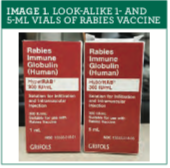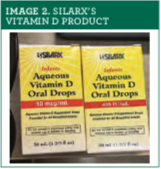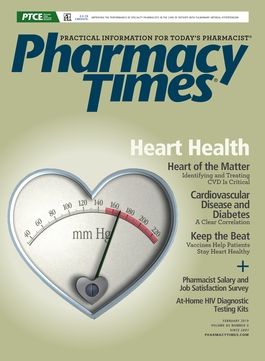Publication
Article
Pharmacy Times
Product and Container Label Changes May Cause Confusion
Author(s):
Be aware of the higher concentration of rabies immune globulin and new units of measure for OTC vitamins A, D, and E.
Changes in product concentration and design, as well as units of measure, can introduce the risk of errors. Significant changes were recently made to rabies immune globulin (human) (HyperRAB) and vitamin A, D, and E products that may contribute to confusion for patients and practitioners.
RABIES IMMUNE GLOBULIN
Recently, Grifols, the manufacturer of HyperRAB, changed the concentration of the product. Because a higher concentration allows for more efficient wound infiltration (ie, more of the immune globulin can be delivered to the affected area in less volume), the concentration was increased from 150 to 300 units/mL. When dispensing, stocking, and storing HyperRAB, it is important to recognize that the product is available in both 1- and 5-mL vials and cartons that are hard to tell apart (image 1). The only visual differences are the volume noted in the lower left corner of the carton and different National Drug Code numbers. The vials both have a 5-mL capacity, athough one contains 5 mL while the other contains just 1 mL.

The 1-mL vial is sufficient for a child weighing up to 15 kg, while the 5-mL vial is sufficient for an adult weighing up to 75 kg, according to the package insert. Both are single-use vials. Confusing the sizes may lead to costly waste if a 5-mL vial is dispensed and used for a child. The situation could also result in inventory issues. For example, an individual may visually scan his or her inventory, not notice the volume differences, and think that enough product is in stock when there may be less than needed. To prevent this, one hospital is storing the 2 sizes separately. Auxiliary labels to better differentiate the products and the use of barcode scanning during inventory and product selection are also options.
VITAMINS A, D, AND E

The units of measure on the labels of OTC fat-soluble vitamins (A, D, and E) have changed from international units (IUs) to metric units (eg, micrograms or milligrams). For example, aqueous vitamin D oral drops previously labeled as 400 IU/mL are now labeled as 10 mcg/mL (image 2). This change also involves OTC solid forms, but it does not include prescription products such as Aquasol A (water-miscible vitamin A palmitate). These changes are based on an FDA final rule, Food Labeling: Revision of the Nutrition and Supplement Facts Labels. The rule also requires listing the absolute amounts of vitamins and minerals in milligrams or micrograms, in addition to the percent daily value on the label.
Unfortunately, most consumers and health care practitioners are unaware of the change, and the labeling may not be helpful in communicating the change. Only the metric measure may appear on container labels, including the supplement facts label (online figure), making it difficult to identify the equivalency between the previous measure in IUs and the new metric measure. However, the notice in the Federal Register mentions that although the amount of vitamin D expressed in IUs is not allowed to appear on the label alone, it may appear in parentheses after the amount of vitamin D in micrograms.
Incidentally, the labeling changes do not reflect changes in strength. One microgram of vitamin D is equal to 40 IUs, so 10 mcg is the same as 400 IUs on the new label. To help prevent confusion, manufacturers should express the units in parentheses after the metric strength to allow for safe transition to metric-only labeling.
Michael J. Gaunt, PharmD, is a medication safety analyst and the editor of ISMP Medication Safety Alert! Community/ Ambulatory Care Edition.

Newsletter
Stay informed on drug updates, treatment guidelines, and pharmacy practice trends—subscribe to Pharmacy Times for weekly clinical insights.






